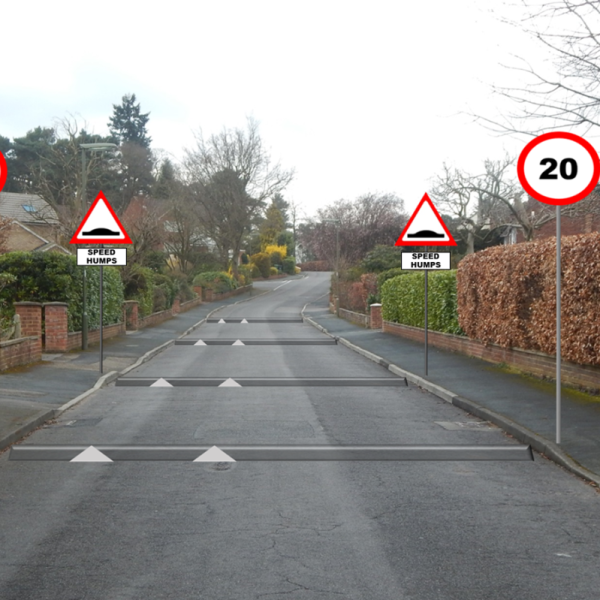
Best Practices for Keeping Drivers Safe on the Road
Being a responsible driver entails adhering to safe driving practices not only for self-preservation but also for the well-being of fellow motorists. To help keep drivers safe on the road, the following best practices should be observed:
1. Adhering to Speed Limits:
Strict compliance with speed limits is crucial for preventing catastrophic accidents and injuries. Driving at an appropriate speed for the prevailing conditions is imperative.
2. Eliminating Distractions:
Distractions, such as texting, phone calls, eating, and adjusting the radio, significantly contribute to road accidents. It is essential to minimize distractions while operating a vehicle.
3. Embracing Seatbelt Use:
Wearing a seatbelt is a fundamental safety measure for drivers. Seatbelts play a vital role in minimizing the risk of severe injuries or fatalities in the event of a collision.
4. Ensuring Vehicle Condition:
Prior to embarking on a journey, conducting a thorough inspection of the vehicle is crucial. This encompasses checking the tires, brakes, lights, and other critical components.
5. Heightened Environmental Awareness:
Vigilance and attentiveness to the surrounding environment are pivotal while driving. Being mindful of other motorists, pedestrians, and potential road hazards is paramount.
6. Compliance with Traffic Regulations:
Adhering to traffic regulations, such as halting at stop signs and red lights, yielding to other drivers, and employing turn signals, is imperative for safe driving.
7. Zero Tolerance for Impaired Driving:
Operating a vehicle under the influence of alcohol or drugs poses a grave danger to oneself and others. It is essential to abstain from driving while under the influence of any substance.
By conscientiously embracing these best practices, drivers can contribute to their own safety as well as the safety of other road users. Adherence to safe driving habits is crucial in mitigating the risk of accidents and injuries.
Importance of Safe Driving Practices
Practicing safe driving habits is of paramount importance in minimizing road accidents and promoting overall road safety. The significance of these best practices extends beyond individual drivers and has profound implications for the broader community.
By obeying speed limits and avoiding distractions, drivers contribute to a safer road environment. Adherence to speed limits reduces the likelihood of collisions, while minimizing distractions fosters heightened focus and awareness while driving. Moreover, the conscientious use of seatbelts significantly reduces the severity of injuries in the event of an accident, potentially saving lives.
Ensuring the good condition of vehicles is equally vital, as it mitigates the risk of mechanical failures that could result in hazardous situations on the road. Additionally, environmental awareness and compliance with traffic regulations are crucial aspects that collectively contribute to a harmonious and safe driving environment.
The proactive adoption of safe driving practices is pivotal in curbing the societal and economic burden of road accidents. Beyond the human toll in terms of injuries and fatalities, road accidents also exert a substantial financial strain on healthcare systems and the wider economy. Therefore, by fostering a culture of safe driving, drivers can collectively contribute to the reduction of these adverse societal effects.
The Personal and Societal Impact of Safe Driving
The adoption of safe driving practices not only safeguards individual lives but also has far-reaching effects on society as a whole. By prioritizing safe driving, individuals uphold the shared responsibility for community well-being and contribute to the cultivation of a safer and more cohesive society.
Collective adherence to safe driving practices fosters a culture of mutual respect and consideration among drivers. This, in turn, creates a more harmonious and less stressful road environment. By prioritizing safety, drivers contribute to the overall quality of life within communities, instilling a sense of security and reassurance among residents.
Moreover, the financial implications of safe driving practices are substantial. By minimizing the occurrence of road accidents through responsible driving behaviors, individuals and society at large can alleviate the burden on healthcare systems and insurance providers. This, in turn, allows for the efficient allocation of resources towards other societal needs.
On a personal level, the adoption of safe driving practices ensures individual well-being and peace of mind. By conscientiously adhering to speed limits, minimizing distractions, and prioritizing vehicle maintenance, drivers can protect themselves and their loved ones from the potential repercussions of road accidents.
Conclusion
In conclusion, the adoption of best practices for safe driving is instrumental in preserving and promoting road safety. By adhering to speed limits, eliminating distractions, wearing seatbelts, ensuring vehicle condition, and complying with traffic regulations, drivers actively contribute to their own well-being and the welfare of fellow road users.
The societal impact of safe driving practices is equally profound, encompassing economic, social, and healthcare-related implications. By collectively embracing safe driving habits, individuals can mitigate the occurrence of road accidents and reduce the associated societal burdens.
Ultimately, the conscious decision to prioritize safe driving fosters a culture of responsibility, consideration, and respect on the road, engendering a more secure and cohesive community. Therefore, the adoption of safe driving practices is not only a personal commitment to safety but also a collective endeavor towards the betterment of society as a whole.
















